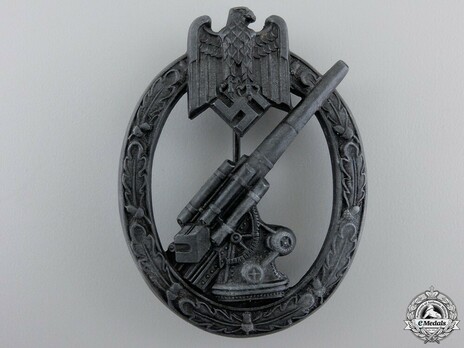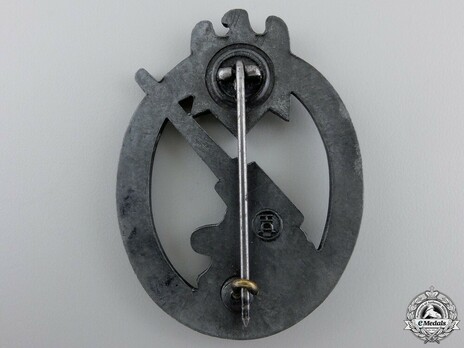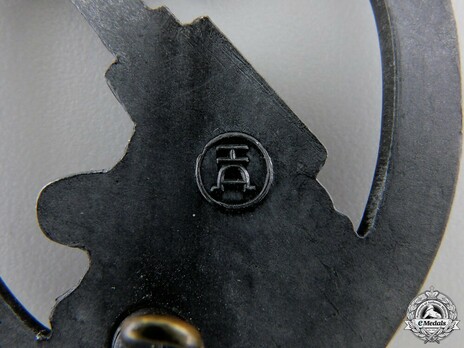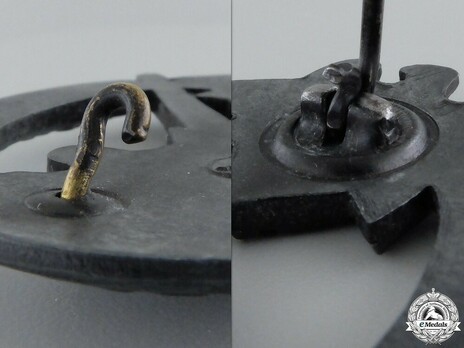Army Flak Badge, by H. Aurich
CATEGORY: Version
SKU: 01.GTR.0605.101.04.000
Estimated market value:




Estimated market value:
In zinc, by Herman Aurich (marked on reverse), textbook example, it weighs 26.8 grams, in very fine condition.
The Army Flak Badge was established on July 18, 1941, by Generalfeldmarschall von Brauchitsch, the Supreme Commander of the Army, to recognise members of anti-flak batteries, searchlight crews, and sound-locator crews, who distinguished themselves in actions against Allied aerial attacks.
Initially, the badge was awarded for group achievement instead of individual achievement. Units would receive it after downing five targets. Commanders of units would receive it after at least half of their men had received the badge. This was later changed, and a point system reflecting the requirements needed to receive the Luftwaffe Flak Badge was instituted for the Army Flak Badge as well. In order to receive the badge, an individual had to accumulate a total of sixteen points. Initially, two points were conferred for downing an enemy aircraft with the assistance of another flak battery. If a sole battery was responsible for bringing down an aircraft, each member involved received four points. One point was awarded to search and spotlight crews for every enemy aircraft they detected. During the later stages of the war, this was slightly changed. From then on, the badge could be awarded after participating in three air defense actions that resulted in the downing of a plane, or after participating in five air defenses regardless of downings of planes.
Award conferrals were authorised by Commanders who held the rank of Artillery General or higher. The Army Flak Badge was strictly conferred for the fighting of aerial targets, while the General Assault Badge was awarded for the fighting of ground-based targets.
The badge was designed by the firm of Wilhelm Ernst Peekhaus in Berlin.
The only maker known to have produced tombac Army Flak Badges is C. E. Juncker. All other makers exclusively produced solid die cast zinc badges, with Förster & Barth being the only company to not only fashion solid, but also a number of semi-hollow badges.
Compared to the Luftwaffe Flak Badges, the Army Flak Badges are relatively scarce.
Badges by Aurich are marked “H A” on the reverse, with the H lying horizontally on top of the A. They are of a subtle, darker colour. Aurich badges are scarce.

Comments
Sign in to comment and reply.


Scroll Top